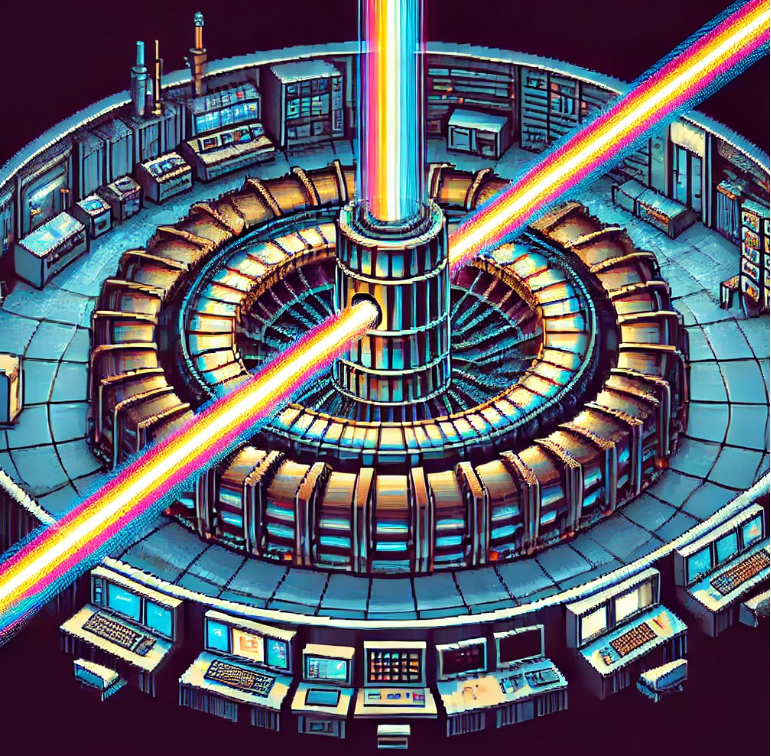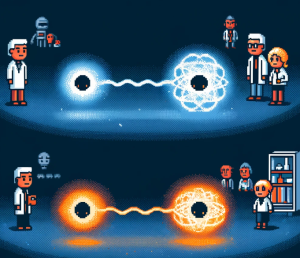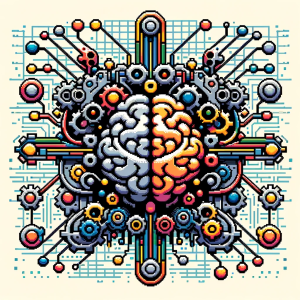
AI and particle accelerators
Imagine you’re in a room where a particle accelerator—one of the most complex machines humans have ever built—is quietly humming. It’s a machine capable of propelling particles to nearly the speed of light, unlocking mysteries of the universe that were once thought to be out of reach. But running these massive, high-precision machines is no easy task. The variables to control are mind-boggling, and slight adjustments can have huge impacts on the results. That’s where artificial intelligence (AI) and machine learning (ML) are stepping in to change everything. This isn’t just another chapter in the story of technological progress—it’s a revolution that is transforming how we explore and understand the world at its most fundamental level.
AI Meets Particle Physics: Why It Matters Now
In the past decade, AI has emerged as a key player in various industries, from healthcare to finance, but its impact on particle physics is especially profound. Particle accelerators are incredibly intricate machines that push the limits of technology and science. They are used for a wide range of applications, from cancer treatments with proton beams to creating materials that fuel our technological advancements. Yet, designing, controlling, and optimizing these machines is a monumental challenge. Traditional methods, which rely on classical physics simulations, often fall short. AI and ML are stepping up to tackle these challenges in ways that were unimaginable just a few years ago.
AI doesn’t just help with calculations—it learns from data, enabling particle accelerators to operate more efficiently, safely, and with unprecedented precision. It’s like giving these machines a brain, one that can make split-second decisions, adapt to new conditions, and optimize performance in ways human operators could only dream of.
Overcoming Traditional Limitations
Particle accelerators are designed using highly complex simulations based on the laws of physics. These simulations predict the behavior of particle beams as they travel through the accelerator, interacting with magnetic fields and other components. The problem? These simulations can take hours—sometimes even days—to run, especially when modeling advanced effects like space charge or synchrotron radiation. This bottleneck makes real-time optimization nearly impossible.
This is where AI enters the picture. By using machine learning, scientists can now develop “surrogate models”—AI-driven models that are trained on existing simulation data but can provide results in seconds instead of hours. These models aren’t just fast; they’re also incredibly accurate, enabling researchers to explore and fine-tune designs far more efficiently. The result? AI accelerates our ability to design and operate these colossal machines, opening the door to new discoveries in fields like nuclear physics, materials science, and even cancer treatment.
Real-Time Control: AI in Action
Let’s dive into what happens once the accelerator is operational. Traditional methods of controlling particle beams involve manually adjusting variables like magnetic field strength and beam energy—a painstaking process that requires human expertise and often trial and error. But in an environment where precision is everything, even small errors can be disastrous.
AI-driven systems, however, learn from past data to predict the best possible settings for any given experiment. Think of it like having an autopilot for a highly complex machine, one that continuously learns and adjusts itself to maintain optimal conditions. This is particularly important for high-stakes experiments, where precise beam control is crucial to achieving the desired results. AI doesn’t just offer predictions; it makes intelligent decisions based on real-time data, constantly adapting to ensure peak performance.
Imagine the impact of this technology in a healthcare setting. In hospitals where particle accelerators are used to deliver precise radiation doses to cancer patients, AI could ensure that treatments are not only faster but also more accurate, minimizing the damage to healthy tissue and maximizing the effect on tumors. It’s no exaggeration to say that AI is helping save lives by improving the precision of medical treatments.
The Road Ahead: Challenges and Future Directions
Despite these advances, there’s still a long road ahead for AI in particle accelerators. One of the biggest challenges is what scientists call “distribution shift”—essentially, the difference between the conditions under which the AI was trained and the new conditions it encounters during operation. As accelerators evolve, AI models must adapt to these changes in real time, and that’s no small feat. Researchers are working on continuous learning models that allow AI systems to recalibrate themselves as conditions change, much like how human operators would adjust their settings based on experience.
Another challenge lies in the sheer complexity of these machines. While AI has shown promise in automating certain tasks, there are still many unknowns. For instance, some physical processes are so poorly understood that even the best AI models struggle to provide accurate predictions. In these cases, researchers are exploring hybrid models that combine the best of both worlds—leveraging the power of AI while still relying on tried-and-true physics simulations.
But perhaps the most exciting aspect of this AI revolution is its potential to push particle physics into new realms of discovery. As AI improves, particle accelerators will become more capable of handling complex, high-energy beams, paving the way for groundbreaking experiments that could redefine our understanding of the universe.
Join the Conversation
- How do you think AI can further transform industries beyond particle physics?
- What are some potential ethical concerns with using AI to control such powerful machines, and how should we address them?
Explore and Learn with Science
Dive into groundbreaking research and inspiring stories with ‘This Week in Science’! Perfect for teachers and science enthusiasts, our free weekly newsletter expands your horizons in teaching and learning. Join us today and reshape your engagement with science. If you liked this blog, please share it! Your referrals help This Week in Science reach new readers.



